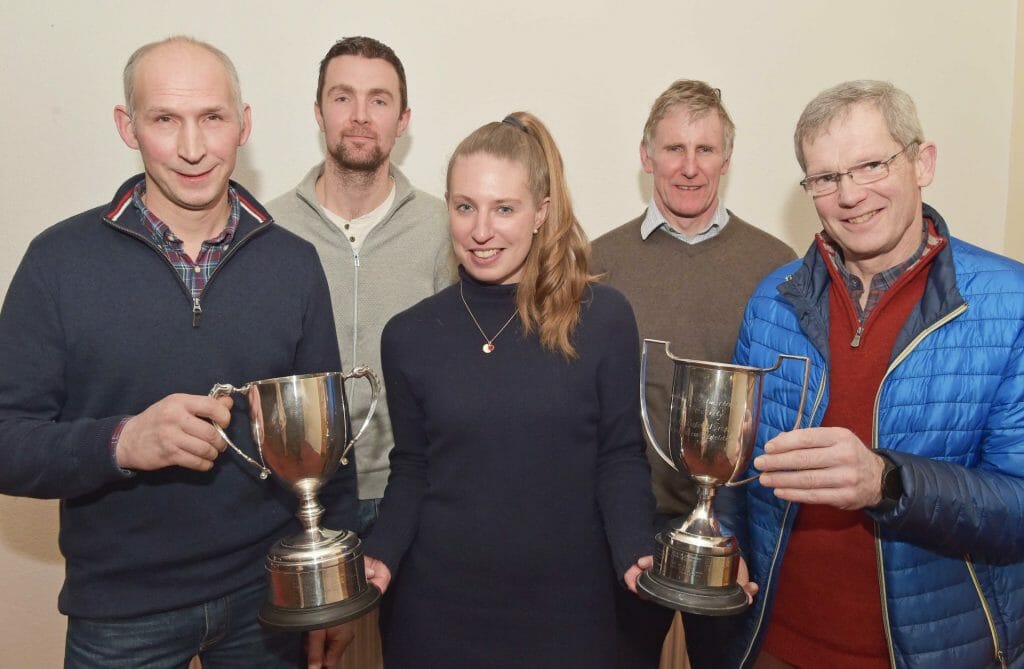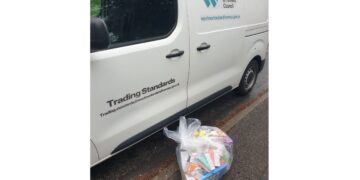
Judging the six finalists in the Cumbria Grassland Society’s annual forage competition proved a tough task, with all very close on analysis.
The task of sorting them out fell to Dr Liz Homer and Isabelle England, of Trouw Nutrition, who had to assess six excellent farms, with very different milk production systems and breeds.
As well as dry matter, energy, protein and fermentation, the forages were assessed on how well they would be digested by the cow, subsequent performance and cow health.
The winner was Steven Heron, from Eastfield, Warcop, with second place going to Andrew Addison, of Spittals Farm, Kirkby Thore, and third to the Morley family, from Hadderdale, Great Asby.
It was the second year Steven had entered the competition and said the win was a great reward for the family and their employees.
He put his success down to factors including the excellent weather when he harvested the winning silage — a second cut taken on 17th July.
“It was really exceptional weather, with the temperature hitting 40 degrees on the day we finished,” he said.
Prior to the first cut, on 27th May, nitrogen was applied at a rate of 60 units, with 40 before the second cut, plus 3,500 gallons of slurry. Lallemand additive was used in the silage.
Steven added that the judges had also been impressed by his good clamp management, with the crop well compacted in the pit.
The figures for Steven’s silage were DM 35.9, protein 14.1, D value 75.8, ME 12.1 and pH 3.6.
At the award ceremony, held at Penrith Golf Club, Dr Homer commented that records over many years from the Trouw laboratories show that if you get a mild winter, in which the grass keeps growing, first cut silage quality is never as good as normal the following spring.
This theory was confirmed by the competition results — two of the top three forages were second cut and the leading first cut was taken from land grazed by sheep until March, removing the relatively poor winter growth.
A common problem this winter has been forage slipping in the clamps. Dr Homer said that drier silages are less prone to slipping, but the fibre content is important too.
The further NDF fibre levels fall below 40 per cent, the greater the likelihood of slippage and the problems this creates.
If fibre levels are too high, energy and digestibility decrease, reducing the milk and animal growth that can be produced from forage. Her suggestion was to aim for low to mid 40s. Fibre content in the three winners ranged from 42 to 47 per cent and none of these clamps had slipped.
The importance of pre-cut testing was stressed and it was recommended that a couple of samples are taken in the two weeks preceding cutting to check when is the best time to do so. Analysis should look at NDF fibre content in addition to sugars and free nitrates.
Unpredictable weather means that patterns of grass growth are varying considerably from year to year.
Grazed grass testing can also be a helpful management tool, informing farmers how much milk cows can realistically get from grass in any particular week. This also varies widely from year to year.
National averages are published in the media, but grass growth patterns in the South West, for example, can be significantly different from those in the North West, as we have seen this year.
Knowing what the situation is on your own individual farm can be of great benefit.






























